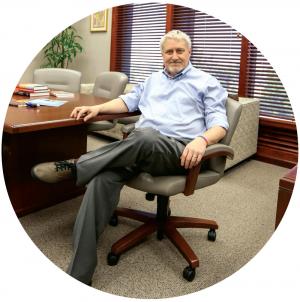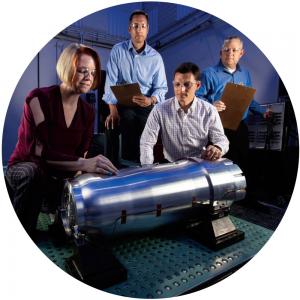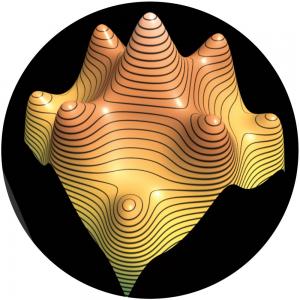Lawrence Livermore National Laboratory had another exceptional year pushing the frontiers of science and technology to strengthen national security in a rapidly changing world.
Our primary mission is nuclear deterrence. In support of the Department of Energy (DOE) and its National Nuclear Security Administration (NNSA), we provide special expertise and advanced scientific tools to meet the enduring need for a safe, secure, and effective U.S. nuclear weapons stockpile.
As an NNSA national security laboratory, we also apply our outstanding science and technology (S&T) to a larger set of important national needs. We provide expertise across the spectrum of weapons of mass destruction to enable high-confidence implementation of arms control, nonproliferation, and other threat reduction measures. We further strengthen deterrence more broadly as it intersects evolving threats in space, cyberspace, and missile defense. In addition, our Laboratory develops solutions for energy security and climate resilience and makes significant contributions to the fight against cancer and neural disorders.
Our mission requires informed anticipation, constant innovation, and disciplined delivery to our sponsors. In FY 2019, we fully met our programmatic and operational responsibilities as we enhanced our S&T leadership in areas vital to our missions. This annual report highlights our many contributions to making the nation—and the world—safer and more secure. A principal strength of our Laboratory is our heritage of innovation and multidisciplinary, mission-directed S&T. "Science and Technology on a Mission" has its roots in our founders' objectives and sets today's priorities. This precept of building on our history to make dramatic leaps forward was celebrated in a series of events held during a week in early August 2019.
Distinguished guests and Laboratory employees attended a ceremony to mark the National Ignition Facility's (NIF's) 10th anniversary of operations as a precise, reliable tool for high-energy-density (HED) science experiments. After a decade of service and more than 2,700 experiments, NIF still reigns as the world's most energetic laser. It is an indispensable tool for nuclear weapons stockpile stewardship. HED physics experiments at NIF are vital for validating computer simulation models, providing data to assure performance and modernize the stockpile, and training and testing the capabilities of the nation's stockpile stewards. Experiments are also making important progress toward achieving fusion ignition and enabling exciting discoveries in HED physics and astrophysics.
Later that week, contracts were signed with Cray, Inc., to build NNSA's first exascale supercomputer, El Capitan, to be sited at Livermore. The $600-million machine will sustain LLNL's leadership role in high-performance computing (HPC). Earlier in the year, the Laboratory brought into operation the Sierra supercomputer, currently the world's second most capable machine at less than one-tenth the anticipated speed of El Capitan. Sierra is routinely performing high-resolution 3D weapons physics simulations that were considered "heroic" calculations on previous supercomputers. The machine is a "game-changer."
The combination of supercomputer weapons physics simulations and NIF experiments to gather HED physics data and validate simulation models is crucial to modernizing the nation's nuclear stockpile. Lawrence Livermore and Sandia national laboratories are engaged in the design, development, certification, and bringing into production of the W80-4 warhead for the bomber-delivered Long-Range Standoff missile and the W87-1 for the U.S. Air Force's Ground Based Strategic Deterrent. For these weapons systems, we are focusing on design options that are amenable to cost-effective modern manufacturing methods.
Importantly, across a wide range of mission areas, we are applying machine learning–based artificial intelligence to integrate simulation, experiment, and enormous data sets to expedite discovery. Examples of groundbreaking applications include learning from and designing NIF inertial confinement fusion experiments, enabling early detection of nuclear proliferation activities, fighting cancer, and dramatically reducing the time required to develop new drugs.
LLNL staff and distinguished guests also celebrated the 40th anniversary of DOE's National Atmospheric Release Advisory Center (NARAC). The center operates 24 hours a day, 7 days a week, providing first responders with plume predictions and real-time assessments of hazardous atmospheric emissions. NARAC is one of Livermore's many "around-the-clock" advisory services and a fundamental part of energy and environment research. In this mission area, we have launched a new strategic initiative to develop technologies for global-scale removal and industrial use of carbon dioxide from the atmosphere.
Yet another celebration in August was the 65th anniversary of the Livermore Laboratory Employee Services Association (LLESA). The organization was founded at the initiative of early Laboratory employees to provide social and recreational activities. A nonprofit corporation, LLESA focuses on our Laboratory's most vital asset: our outstanding workforce. Its programs and services—ranging from a daycare center to dancing lessons—are convenient, enriching, and promote employee health and work–life balance.
Livermore's accomplishments flow from a world-class workforce committed to our values of developing new ideas, making a difference, embodying integrity and inclusiveness, and loving the work. In 2019, Glassdoor recognized LLNL as one of the top 10 best places to work nationwide. More than 40 percent of our core staff has been hired in the last five years. To better understand our rapidly changing workforce, we conducted an employee culture and climate survey. The results will guide us in making improvements to the work environment.
An outstanding workforce is our Laboratory's principal strength. Our workforce is ever changing, and this year, special thanks go to Tom Gioconda who concluded his distinguished service as LLNL deputy director. Our thanks also go to our "veteran" employees for their remarkable successes and their mentoring of new staff. We welcome our new employees, who will carry forward LLNL's tradition of excellence in mission-focused S&T and exceptional service to the nation.
In September 2019, Tom Gioconda announced he was stepping down as LLNL deputy director after nine years in this position and returning to Bechtel for a new assignment. Tom assisted three LLNL directors (and an acting director)—watching over day-to-day operations with attention to detail, a focus on continuous improvement, and vigilance in sustaining effective working relationships with sponsors. He helped us all to do our best in service to the nation. In every facet of his job, Tom brought his greatest strength: his people skills. For issues that arose, his approach was "Let's find a solution." Thank you, Tom, for your service!









